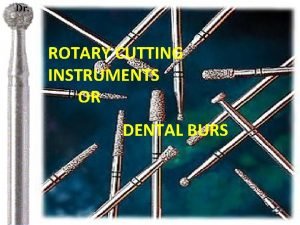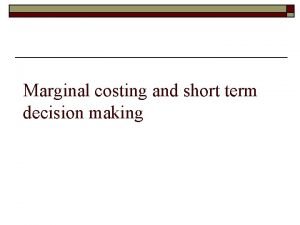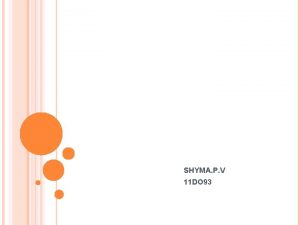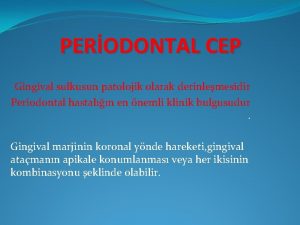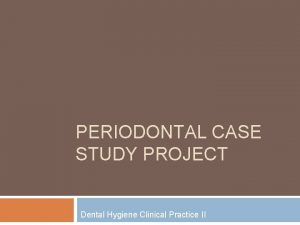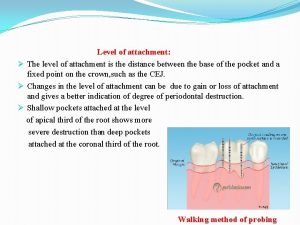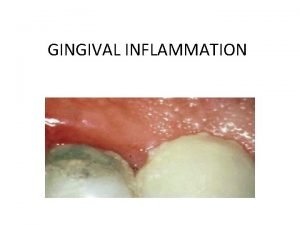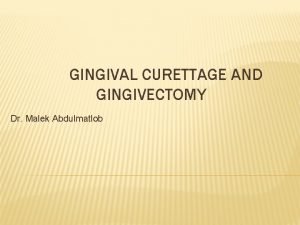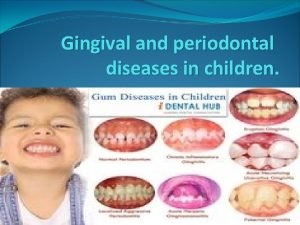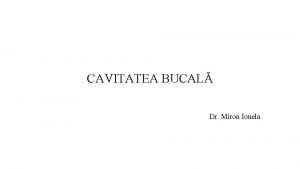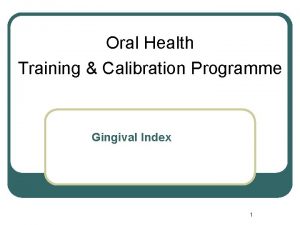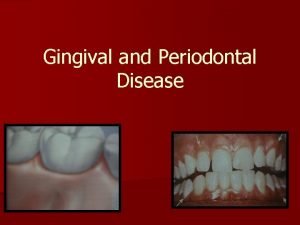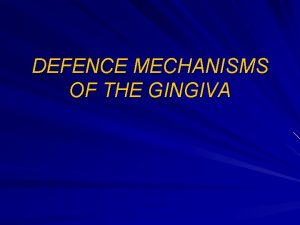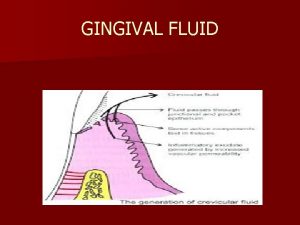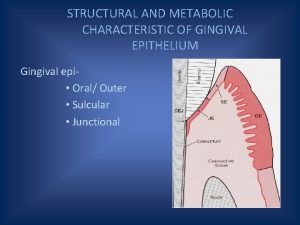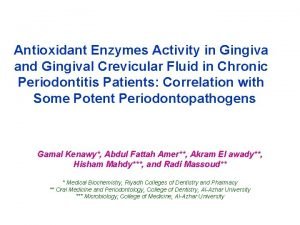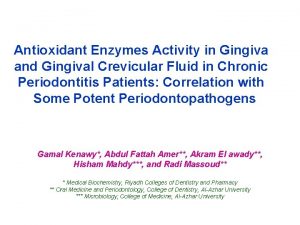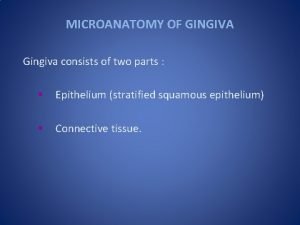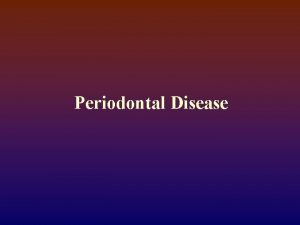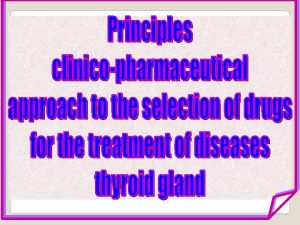GINGIVA Introduction Macroanatomy of Gingiva Marginal Gingiva Gingival
















- Slides: 16

GINGIVA

• Introduction • Macroanatomy of Gingiva -Marginal Gingiva -Gingival Sulcus -Attached Gingiva -Interdental Gingiva • Microanatomy of Gingiva -Gingival Epithelium -General Aspects -Outer / Oral Epithelium -Sulcular Epithelium -Junctional Epithelium -Interface Between Epithelium And Connective Tissue -Gingival Connective Tissue -Cellular Elements -Gingival Fibers

Blood Supply Lymphatic Drainage Gingival Innervation Correlation of Normal Clinical and Microscopic Features -Color -Size -Contour -Shape -Consistency -Surface Texture -Position • Effects of Aging on Gingival Epithelium and Connective Tissue • Conclusion • References • •

INTRODUCTION The gingiva covers the alveolar process, and it is the only one of the periodontal tissues that under healthy conditions is directly visible upon inspection.

Glickman : “Gingiva is the part of the oral mucosa that covers the alveolar processes of the jaws and surrounds the necks of the teeth”. A A P 1992 : The fibrous investing tissue, covered by keratinized epithelium, which immediately surrounds a tooth and is contiguous with its periodontal ligament and with the mucosal tissues of the mouth.

Oral Mucosa consists of : Masticatory Mucosa - Gingiva - covering of Hard palate. Specialized Mucosa - Dorsum of Tongue. OMM lining remainder of oral cavity. Structurally : Keratinized – - masticatory mucosa - vermilion border of the lip. Non keratinized - lining or reflecting mucosa, - specialized mucosa.

MACROANATOMY OF GINGIVA Anatomically v Free or Marginal Gingiva. v Attached Gingiva. v Interdental Gingiva. Functionally v Part facing oral cavity. v Part facing the tooth.

Free or Unattached or Marginal Gingiva : • Terminal edge or border of gingiva surrounding the teeth like a collar. • Usually 1 mm wide. • Demarcated from attached gingiva by a shallow depression – free gingival groove 50 %.

Gingival Sulcus • V –shaped. • Depth of Gingival Sulcus : Ideal conditions - zero. Clinically - 2 – 3 mm. Histologic -1. 8 mm with variations from 0 to 6 mm. • Shallow crevice or space around the tooth bounded by surface of tooth on one side and the epithelium lining the free margin of the gingiva on the other.

Attached Gingiva • Continuous with marginal gingiva & is firm, resilient & tightly bound to the underlying periosteum of the alveolar bone. • The facial aspect of the attached gingiva extends to the relatively loose & movable alveolar mucosa from which it is demarcated by the MGJ.

Width of AG • distance b/w the MGJ & projection on the external surface of the bottom of gingival sulcus/ periodontal pocket. • Greatest in incisor region : 3. 5 to 4. 5 mm in maxilla 3. 3 to 3. 9 mm in mandible • 1. 9 mm in maxilla 1. 8 mm in mandible Least in the first premolar area :

• MGJ remains stationary throughout adult life. • On lingual aspect, AG terminates at the junction with the lingual alveolar mucosa, which is continuous with the mucous membrane lining the floor of mouth. • On palatal surface, it blends imperceptibly with the equally firm, resilient palatal mucosa.

Significance of attached gingiva for the maintenance of periodontal health : • To protect the periodontium from injury caused by frictional forces encountered during mastication • To dissipate the pull on the gingival margin created by the muscles of the adjacent alveolar mucosa.

Interdental Gingiva : • occupies the gingival embrasure, which is the interproximal space beneath the area of tooth contact. • can have a pyramidal or Col shape. PYRAMIDAL SHAPEIn this the papilla is located immediately beneath the contact point. It is present in anterior teeth

COL SHAPE • It is valley like depression that connects the facial and lingual papilla and conforms to the shape of interproximal contact and present in posterior teeth • Its epithelium is non keratinised and same as junctional epithelium

 Gingiva marginal
Gingiva marginal Cutting and non cutting dental instruments
Cutting and non cutting dental instruments Burs classification based on shank
Burs classification based on shank Short term decision
Short term decision Do93
Do93 Gingival cep nedir
Gingival cep nedir Plaque index
Plaque index Gingival attachment
Gingival attachment Gingival anoxemia
Gingival anoxemia Festooned gingiva
Festooned gingiva Lamina dura radiografi
Lamina dura radiografi Parts of clasp
Parts of clasp Bevel in class 5 cavity preparation
Bevel in class 5 cavity preparation Gingival third vs cervical third
Gingival third vs cervical third Mount classification of dental caries
Mount classification of dental caries Cheilita angulară vs herpes
Cheilita angulară vs herpes Loe silness gingival index
Loe silness gingival index


